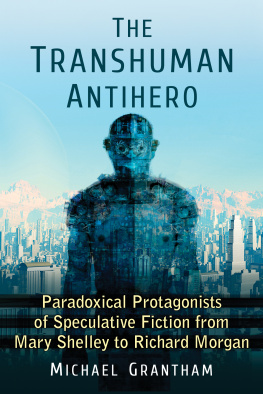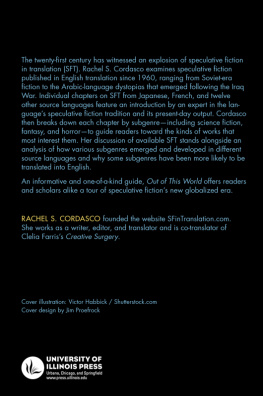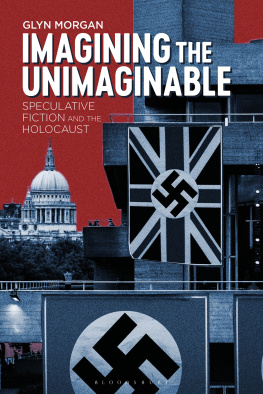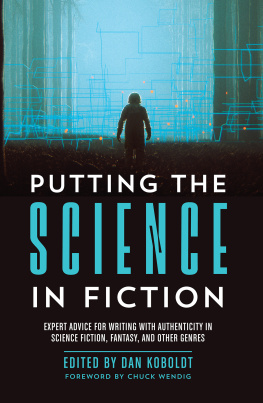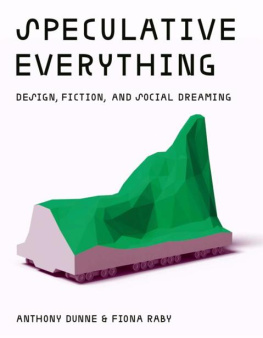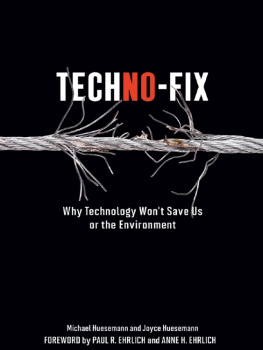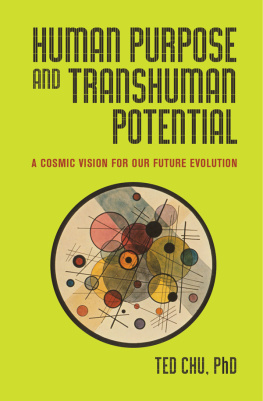
The Transhuman Antihero
Paradoxical Protagonists of Speculative Fiction from Mary Shelley to Richard Morgan
Michael Grantham

McFarland & Company, Inc., Publishers
Jefferson, North Carolina
LIBRARY OF CONGRESS CATALOGUING DATA ARE AVAILABLE
BRITISH LIBRARY CATALOGUING DATA ARE AVAILABLE
e-ISBN: 978-1-4766-1955-2
2015 Michael Grantham. All rights reserved
No part of this book may be reproduced or transmitted in any form or by any means, electronic or mechanical, including photocopying or recording, or by any information storage and retrieval system, without permission in writing from the publisher.
Cover images 2015 Blend Images/Thinkstock
McFarland & Company, Inc., Publishers
Box 611, Jefferson, North Carolina 28640
www.mcfarlandpub.com
Preface
Advances in science and technology no longer change how we, as individuals, live; they determine it. And if the promises of transhumanism are to be believed, such technoscientific developments will, at some point, provide individuals with the capacity to become smarter and stronger, and to live longer, healthier, and more productive lives. But to what end?
Speculative fiction, as anyone with an interest in the genre will know, presents readers with a plethora of transhuman beingsprotagonists whose strengths, intelligence, or skills and abilities mark them as superior to everyday individuals. Often, these protagonists are antiheroic in nature and openly reject the normative moral and social conventions of their social reality. In most cases, these protagonists enact or espouse undoubtedly immoral and/or extremist ideologies, thereby challenging, if not positioning readers to accept, though not necessarily condone, what they might otherwise condemn.
This book offers a reading of selected examples of the antiheroic transhuman in speculative fiction and examines the dualitytranshuman, yet also antiheroicby which they are rendered paradoxical. What becomes evident is that in spite of their apparent superiority, the paradoxical protagonists, like traditional antiheroes, are plagued by personal insecurity and are as susceptible to vice, violence, and petty motivation as ordinary individuals. Ultimately, what the paradoxical protagonist comes to demonstrate is that while technoscientific development might enable us to transcend the limitations imposed upon the human condition, it wont enable us to transcend human nature.
The paradoxical protagonist emerged as a result of my preoccupation with speculative fiction, antiheroes, and the concept of transhumanism. This book based upon my doctoral thesis, is a product of my personal views and observations, structured around my own social reality and the genre to which I have dedicated much of my life.
Introduction: The Paradoxical Protagonist
Many protagonists in speculative fiction represent a paradoxical mix of human and transhuman. This book argues that these paradoxical protagonists, especially when considered in the context of the social realities in which they are depicted and the issues by which they are confronted, offer an alternative medium for the exploration of the dynamic and complex relationship between individuals, society, and technoscientific development. They reflect the ways in which changes in scientific understanding and new or emerging technology are affecting existing normative moral and social convention. Further, these characters also offer new insight into the modern crisis of identity, along with the generalized fear and anxiety surrounding the emergence of transhuman theory and the possibility of transhuman beings.
Much like the hybridized image of machine and organism described by Donna Haraway in A Cyborg Manifesto (1991, p. 149), many of the protagonists of modern speculative fiction represent what might be interpreted as a threat to existing categories, often serving as a mechanism for the deconstruction (or even complete removal) of the differentiation between polarized concepts such as biology and technology, human and animal, human and machine, reality and illusion. Further, the antiheroic nature of these protagonists, as will be demonstrated throughout each chapter, serves to challenge previously established notions of morality and social convention, inevitably blurring the line between right and wrong, morality and immorality, thus providing new insight into broader concepts such as good and evil and how they have come to be perceived.
In order to demonstrate such a claim, this study traces the origins of the antiheroic transhuman back at least as far as Mary Shelleys Frankenstein (1818) and follows its development through key works such as Olaf Stapledons Odd John (1935), Alfred Besters The Stars My Destination (1956), William Gibsons Neuromancer (1986), Alan Moores and Dave Gibbonss Watchmen (19861987) and contemporary narratives such as Richard Morgans Takeshi Kovacs trilogy (Altered Carbon [2002], Broken Angels [2003] and Woken Furies [2005]) and Black Man (2008). The narratives examined throughout this book have been recognized as having made a significant contribution to the development of speculative fiction andwith the exception of Richard Morgans Takeshi Kovacs trilogy and Black Man, discussed in the final chaptershave been the subject of scholarly inquiry (for example, Lopes, Demanding Respect [2009, pp. 111158]; Broderick, Reading by Starlight [1995, pp. 80174]; Stableford, Science Fact and Science Fiction [2006, pp. 4558]; Cavallaro, Cyberpunk and Cyberculture [2000, pp. 14209]). Equally significant is the fact that the protagonists depicted within these narratives not only reflect the paradoxical mix of human, antihero, and transhuman that is the foundation of this study but are also developed and complex characterizations which allow for in-depth analysis, especially when entering into discussions that draw on concepts such as Nietzschean philosophy and the distinction between right and wrong, good and evil.
At the most basic level, the paradoxical protagonist is an amalgam of two primary concepts: the antihero and the transhuman. As a literary concept and character archetype, the antihero has been in circulation since the translation of Fyodor Dostoevskys Notes from Underground in 1864. The emergence of the antihero has had a significant impact upon the development of western literature, specifically in relation to its exploration and depiction of the human condition, the fallibility of the individual, and his susceptibility to vice, corruption, violence, and perversion. As the concept may suggest, the antihero is essentially the antithesis of traditional modes and models of heroism such as those described in-depth by Joseph Campbells The Hero with a Thousand Faces (1949). In The Madman as Hero in Contemporary American Fiction, Michael Woolf argues that the traditional heroic figure has for some years now been mostly inappropriate, especially in relation to contemporary culture (1976, p. 257). Woolf argues that the concept of the anti-hero reflects the nature of reality much more obviously (1976, p. 257). Brombert, in his study In Praise of Antiheroes, makes a similar observation regarding the presence of the antihero within contemporary literary fiction, which he views as becoming increasingly crowded with weak, ineffectual, pale, humiliated, self-doubting, inept, occasionally abject charactersoften afflicted with self-conscious and paralyzing irony (1999, p. 2). Brombert contends that it is the limitations of the antihero, particularly his limited capacity to effect change and his self-conscious and paralyzing irony (1999, p. 2), which separate him from more traditional heroes.
Next page
